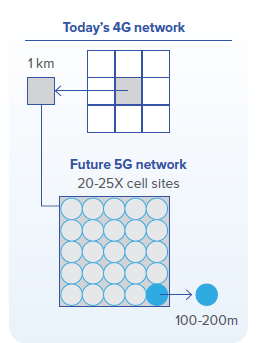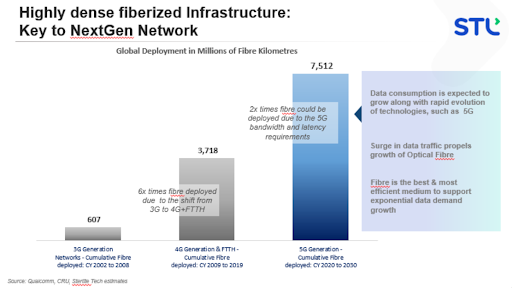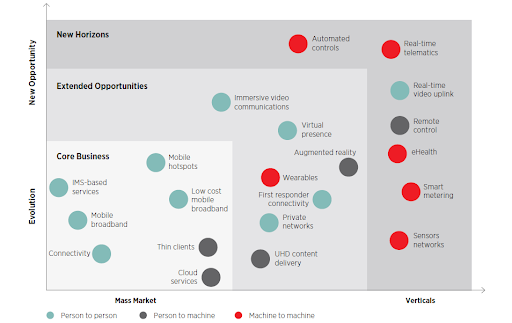There have been talks about 5G technology for almost a decade, but things never really materialized. Finally, 5G is becoming a reality we’ve all been waiting for in silence. In 2018, carriers started rolling out 5G technology to select cities. While most rollouts were for testing purposes, it gave the world a hope. India, being one of the largest consumers of IT, has been determined to be at the forefront of this revolution.

Currently, numerous questions come to mind. 5G will revolutionize major industries, including agriculture, transport, telecommunications, and more. It will be the technology that would connect a billion devices with anything and everything, making the world a much smarter place to live. There are certain 5G imperatives worldwide, and a good understanding of these will ensure better infrastructure, integration, and adoption.
One of the key things is to not just focus on the Radio access network but the overall infrastructure build-out required for a 5G ready architecture. Let’s discuss some of these key priorities:
Fiber intensive transport network:
With 5G, hyperconnectivity is the need of the hour. As such, networks need to adapt! If India wants to seamlessly rollout 5G, it needs to achieve hyperscale network modernization. In order to create smarter networks, India needs a comprehensive fiber rollout process. Deep fiberisation is the key to a successful 5G implementation plan.
For each 1 km coverage of 4G with a single tower, 5G networks will require up to 25x cell sites
Density of 5G cell sites will be a multiple of 4G cell sites. Estimates suggest that for each 1 km coverage of 4G with a single tower, 5G networks will require up to 25x cell sites.
Source: STL Annual Report FY18-19
5G ready networks will consume 2x more fibre than total expected deployment for 4G and FTTH
The road to 5G is in preliminary stages, but will become the main consumer of optical fibre in the near future. By our estimates, 5G ready networks will consume 2x more fibre than total expected deployment for 4G and FTTH.
Source: Qualcomm report, CRU report, STL estimates
It’s worth mentioning that hyperscale network deployment faces some serious challenges. But with companies like Sterlite Technologies (STL) and others, it’s easier to combine cutting-edge technology with exceptional service engineering.
Leaders in the industry have been focused on efficient fiber rollouts. Comprehensive geotechnical surveys, flawless ground level execution, anticipatory planning, and microscopic routes have allowed these companies to bring unsurpassed quality to the process.
Huge markets like the USA, China, and France have been aggressively rolling out fiber deployment. India still has a long way to go!
Next gen OSS/ BSS solution:
While the operators are more focused on 5G infrastructure requirements at this stage, the importance of Operational and Business support systems, which would eventually enable pricing, selling, marketing, and operations of complex use cases like connected cars etc. can not be overlooked.
Network intelligence and automation:
With plethora of use cases as shown in the image below (also mentioned in our earlier blog – Decoding 5G), 5G networks would seemingly be more complex than our current mobile networks.
Source: GSMA
To manage such a network, where one would have multiple frequency bands to toggle between and to eventually provide the promised 5G experience to end consumers, these networks need to be intelligent and automated. There are several ways industry and tech disruptors intend to achieve this.
Network Slicing as a solution has already started gaining traction. It is where differentiated bandwidth provisioning can be done in real time. Software defined virtual radio access network combined with multi access edge compute offering to bring down latency is also picking up steam.
Only time will tell which specific technology takes the lead in making networks smarter, more intelligent, and automated. Fortunately, there are some things that are certain at this stage:
- Fibre would play a critical role in enabling 5G, and deployment planning of a dense and deep fibre network is as essential as planning for the radio access network.
- Similarly, billing and business support stack would need upgradation to support operations of complex use cases enabled by 5G.
- Future tech enabling edge compute and storage would be mission critical to make the network smart and intelligent to eventually provide the promised experience to end consumers.
If there is anything as important as 5G, it’s the infrastructure it will require for fulfilling its promise of the hyperconnectivity that is set to change the world, for the smarter. The most significant imperative here is deep fiberization as 5G will require extremely dense fibre deployment, which STL is already striding ahead with, coupled with its trademark cutting-edge technology. will Operational and business solutions along with network intelligence and automation are the other two prerequisites. So is the world really 5G ready? Read on.






